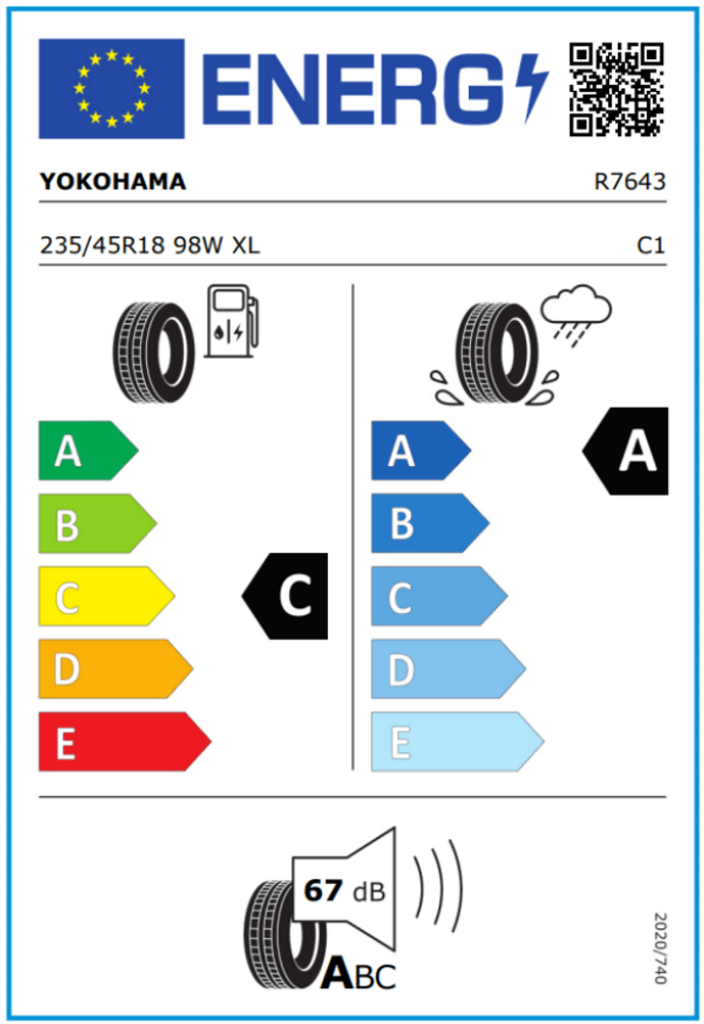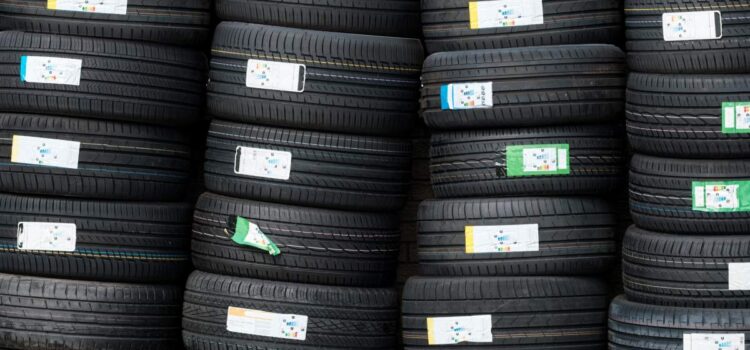The EU Tyre Label is an official classification system introduced by the European Union in 2012 to help consumers make informed decisions about their tyre purchases. This label provides clear information on the tyre’s performance in three key areas: fuel efficiency, wet grip, and noise levels.
The goal of the label is to improve road safety, reduce environmental impact, and enhance fuel efficiency across Europe. By offering a simple yet informative rating system, the EU Tyre Label allows consumers to quickly compare tyres based on their specific needs, encouraging both safer and more eco-friendly tyre choices.
Key Elements of the EU Tyre Label
The EU Tyre Label is comprised of three primary performance categories:
- Fuel Efficiency
- Wet Grip
- External Noise
Each of these categories provides vital information about the tyre’s capabilities and its potential impact on both the environment and driving performance. Let’s explore these elements in more detail.

1. Fuel Efficiency
Fuel efficiency is one of the most important aspects of the EU Tyre Label. Tyres play a significant role in a vehicle’s overall fuel consumption. The label classifies fuel efficiency using a grading system that ranges from A (most fuel-efficient) to E (least fuel-efficient). This rating is based on the tyre’s rolling resistance.
Rolling resistance refers to the energy lost when a tyre rolls over a surface. The lower the rolling resistance, the less energy (fuel) is required to keep the vehicle moving. Choosing tyres with better fuel efficiency ratings can lead to substantial cost savings over the long term, especially for vehicles that cover many kilometres. According to some estimates, switching from a low-rated tyre to a high-rated tyre in terms of fuel efficiency can save up to 7.5% in fuel consumption.
Benefits of fuel-efficient tyres include:
- Reduced fuel costs
- Lower CO2 emissions
- Better for the environment
2. Wet Grip
The wet grip rating focuses on the tyre’s performance in wet conditions, which is critical for road safety. Tyres with excellent wet grip reduce the stopping distance during rainy weather, helping drivers maintain better control of their vehicles in slippery conditions.
The wet grip classification also follows a scale from A (best performance) to E (poorest performance). The rating indicates how quickly a tyre can stop a vehicle on a wet road at speeds of 80 km/h. A tyre rated A can stop a car up to 18 meters shorter than one rated E. This difference can be crucial in preventing accidents, particularly in countries with frequent rainfall.
Benefits of high wet grip rating include:
- Shorter braking distance in wet conditions
- Improved safety for drivers and passengers
- Enhanced road control
3. External Noise
External noise refers to the level of sound that the tyre emits as it rolls on the road. The noise level is measured in decibels (dB) and is represented on the EU Tyre Label by a three-wave icon and a numerical value.
- One black wave represents the quietest tyres, emitting 3 dB less than the legal limit.
- Two black waves represent tyres that meet the legal limit.
- Three black waves indicate tyres that exceed the legal limit but are still permitted to be sold.
Noise pollution is not just an environmental issue but also a comfort factor. For people living in urban areas or places near highways, quieter tyres can significantly reduce the level of noise pollution.
Benefits of quieter tyres include:
- Reduced environmental noise pollution
- A quieter and more comfortable driving experience
Changes in the New EU Tyre Label (2021 Update)
In May 2021, the European Union updated the EU Tyre Label to make it more comprehensive and user-friendly. The new label includes a QR code that provides additional information on the tyre’s specifications when scanned, allowing consumers to access the European Product Registry for Energy Labelling (EPREL) for more detailed data.
The new label also added two new icons for winter tyres and snow tyres. These icons indicate whether the tyre is suitable for severe snow conditions (symbolised by the snowflake symbol) or for ice conditions (represented by an ice mountain).
This change helps drivers in countries with extreme weather conditions choose tyres more suitable for their local environment, adding to safety and vehicle performance during winter months.
How to Use the EU Tyre Label When Choosing Tyres
The EU Tyre Label can help consumers make informed decisions based on their driving habits and conditions. However, it’s important to remember that no single tyre is perfect for every situation. Depending on where you live and how you drive, you may prioritise different label categories. Here’s how to approach the selection process:
- City Driving: If you mostly drive in urban areas, where stopping and starting is frequent, focus on fuel efficiency and wet grip. Tyres with a higher fuel efficiency rating will save you more money on fuel over time, and good wet grip will ensure safety during unexpected rain showers.
- Highway Driving: For frequent highway drivers, external noise levels and wet grip may be more important. A quieter tyre will make long-distance driving more comfortable, while strong wet grip is essential for safe highway speeds in poor weather.
- Winter Conditions: If you live in a region with severe winter conditions, look for tyres with snow and ice icons on the label. These tyres are specially designed for better performance in freezing temperatures and snowy conditions.
- Eco-Conscious Choices: If environmental impact is your priority, choose tyres with an A rating in fuel efficiency and low external noise. These tyres will not only reduce your fuel consumption but also contribute to lower CO2 emissions and less noise pollution.
Legal and Environmental Impacts
The EU Tyre Label plays a significant role in the EU’s wider strategy to reduce carbon emissions. The transportation sector accounts for a large portion of Europe’s total greenhouse gas emissions, and tyre selection can contribute to lower fuel consumption and, by extension, lower CO2 emissions.
By encouraging the use of more fuel-efficient tyres, the EU hopes to reach its 2050 climate neutrality goal, which aims to reduce net greenhouse gas emissions to zero. With stricter environmental regulations on the horizon, tyres with high fuel efficiency ratings may also become more attractive from a regulatory standpoint.
Conclusion
The EU Tyre Label is a valuable tool that offers drivers important insights into the performance and environmental impact of their tyres. By providing information on fuel efficiency, wet grip, and external noise, the label makes it easier for consumers to choose tyres that suit their driving conditions and personal preferences.
As the automotive industry moves toward more sustainable practices, the EU Tyre Label will continue to evolve, pushing manufacturers to develop safer, quieter, and more fuel-efficient tyres. Understanding and using this label effectively can help drivers make smarter, safer, and more eco-friendly choices.






